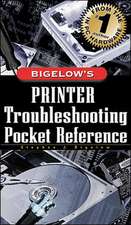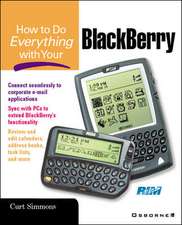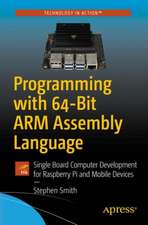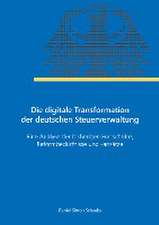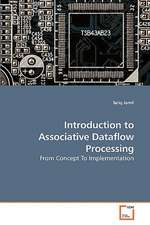Raspberry Pi Assembly Language Programming: ARM Processor Coding
Autor Stephen Smithen Limba Engleză Paperback – 24 oct 2019
You'll learn how to interface to the Pi’s hardware including accessing the GPIO ports. The book will cover the basics of code optimization as well as how to inter-operate with C and Python code, so you'll develop enough background to use the official ARM reference documentation for further projects.
With Raspberry Pi Assembly Language Programming as your guide you'll study how to read and reverse engineer machine code and then then apply those new skills to study code examples and take control of your Pi’s hardware and software both.
What You'll Learn
- Program basic ARM 32-Bit Assembly Language
- Interface with the various hardware devices on the Raspberry Pi
- Comprehend code containing Assembly language
- Use the official ARM reference documentation
Who This Book Is For
Coders who have already learned to program in a higher-level language like Python, Java, C#, or C and now wish to learn Assembly programming.
Preț: 263.49 lei
Preț vechi: 329.36 lei
-20% Nou
Puncte Express: 395
Preț estimativ în valută:
50.42€ • 52.78$ • 41.72£
50.42€ • 52.78$ • 41.72£
Carte disponibilă
Livrare economică 15-29 martie
Preluare comenzi: 021 569.72.76
Specificații
ISBN-13: 9781484252864
ISBN-10: 1484252861
Pagini: 220
Ilustrații: XXII, 374 p. 31 illus.
Dimensiuni: 155 x 235 x 28 mm
Greutate: 0.55 kg
Ediția:1st ed.
Editura: Apress
Colecția Apress
Locul publicării:Berkeley, CA, United States
ISBN-10: 1484252861
Pagini: 220
Ilustrații: XXII, 374 p. 31 illus.
Dimensiuni: 155 x 235 x 28 mm
Greutate: 0.55 kg
Ediția:1st ed.
Editura: Apress
Colecția Apress
Locul publicării:Berkeley, CA, United States
Cuprins
Chapter 1: Getting Started.- Chapter 2: Loading and Adding.- Chapter 3: Tooling Up.- Chapter 4: Controlling Program Flow.- Chapter 5: Thanks for the Memories.- Chapter 6: Functions and the Stack.- Chapter 7: Linux Operating System Services.- Chapter 8: Programming GPIO Pins.- Chapter 9: Interacting with C and Python.- Chapter 10: Multiply, Divide and Accumulate.- Chapter 11: Floating Point Operations.- Chapter 12: Neon Coprocessor.- Chapter 13: Conditional Instructions and Optimizing Code.- Chapter 14: Reading and Understanding Code.- Chapter 15: Thumb Code.- Chapter 16: 64-Bits.- Appendix A: The ARM Instruction Set.- Appendix B: Linux System Calls.- Appendix C: Binary Formats.- Appendix D: Assembler Directives.- Appendix E: ASCII Character Set.
Notă biografică
Stephen Smithis a retired Software Architect, located in Gibsons, BC, Canada. He's been developing software since high-school, or way too many years to record. Since retiring he has pursued Artificial Intelligence programming, earned his Advanced HAM Radio License and enjoys mountain biking, hiking, and nature photography. He continues to write his popular technology blog at smist08.wordpress.com.
Textul de pe ultima copertă
Gain all the skills required to dive into the fundamentals of the Raspberry Pi hardware architecture and how data is stored in the Pi’s memory. This book provides you with working starting points for your own projects while you develop a working knowledge of Assembly language programming on the Raspberry Pi.
You'll learn how to interface to the Pi’s hardware including accessing the GPIO ports. The book will cover the basics of code optimization as well as how to inter-operate with C and Python code, so you'll develop enough background to use the official ARM reference documentation for further projects.
With Raspberry Pi Assembly Language Programming as your guide you'll study how to read and reverse engineer machine code and then then apply those new skills to study code examples and take control of your Pi’s hardware and software both.
Caracteristici
Reverse engineer and hack code Transfer skills from the Pi to mobile and other projects Bridge the gap between software programming and hardware control

